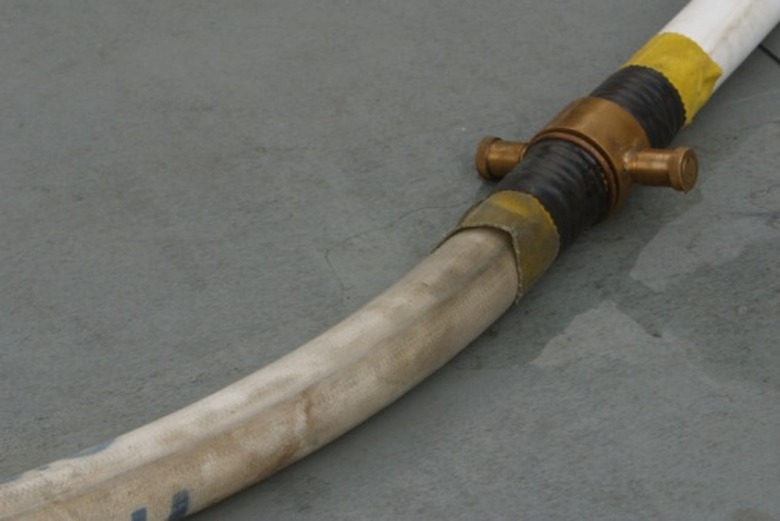How To Perform A Fire Pump Churn Test
A fire pump churn test should be performed weekly according to Allianz Risk Consultants as a safety precaution. The fire pump must provide enough pressure to pump water when firefighters respond to an emergency. The fire pump churn test is done by running the fire pump without the water flowing. The churn pressure is measured. This is a measure of the pressure the pump delivers when it is running without water flowing through it. This is general knowledge for people who wish to pursue a career as a firefighter.
Before Beginning The Test
Step 1
Notify your local alarm company of a pending churn test.
Step 2
Verify the fire pump churn test by checking the test log.
Step 3
Make sure the jockey pump is shut off. This is the small pump in the system that keeps pressure in the system's piping.
Step 4
Check drainage of the drip pockets under the packing gland. Check the packing adjustment drip so that lubrication is maintained. It should be about one drop per second.
Step 5
Make sure fire pump is in automatic mode by checking the fire pump controller.
The Test
Step 1
Place a five-gallon bucket to catch water under the small pet valve that controls pressure. This valve is on the side or under the pump controller.
Step 2
Begin to allow pressure to drop by opening the small pet cock valve. Note the pressure beginning to drop in response to the opening of the valve in the log. The pump will start to work automatically. Close the small pet cock valve once the pump starts.
Step 3
Find the ideal churn pressure on the nameplate of the pump. Note this ideal pressure in the log. Take the difference between the suction gauge reading and the discharge gauge reading to find the churn pressure. Note the suction gauge pressure, discharge pressure and the actual or found churn pressure in the log. The found churn pressure should match the ideal pressure noted in the log.
Step 4
Observe the packing glands to make sure they are still leaking freely to cool the packing off. Note this on the log. Note in the log that the casing relief valve begins to drain while the pump is running to keep pump case from overheating.
Step 5
Let the pump run for seven minutes, then shut it off for seven minutes. Make a note in the log if no adverse conditions were found during the test.
After Finishing
Step 1
Reset the fire pump to automatic.
Step 2
Reset the jockey pump to automatic.
Step 3
Bring any adverse conditions to the attention of the facility manager.
Step 4
Sign and date the test log.
Things Needed
- Test log
- 5 gallon bucket
TL;DR (Too Long; Didn't Read)
Have someone who has worked with the pump before help you the first time you perform this test.
Cite This Article
MLA
Holland, Emily. "How To Perform A Fire Pump Churn Test" sciencing.com, https://www.sciencing.com/perform-fire-pump-churn-test-8535391/. 24 April 2017.
APA
Holland, Emily. (2017, April 24). How To Perform A Fire Pump Churn Test. sciencing.com. Retrieved from https://www.sciencing.com/perform-fire-pump-churn-test-8535391/
Chicago
Holland, Emily. How To Perform A Fire Pump Churn Test last modified March 24, 2022. https://www.sciencing.com/perform-fire-pump-churn-test-8535391/
